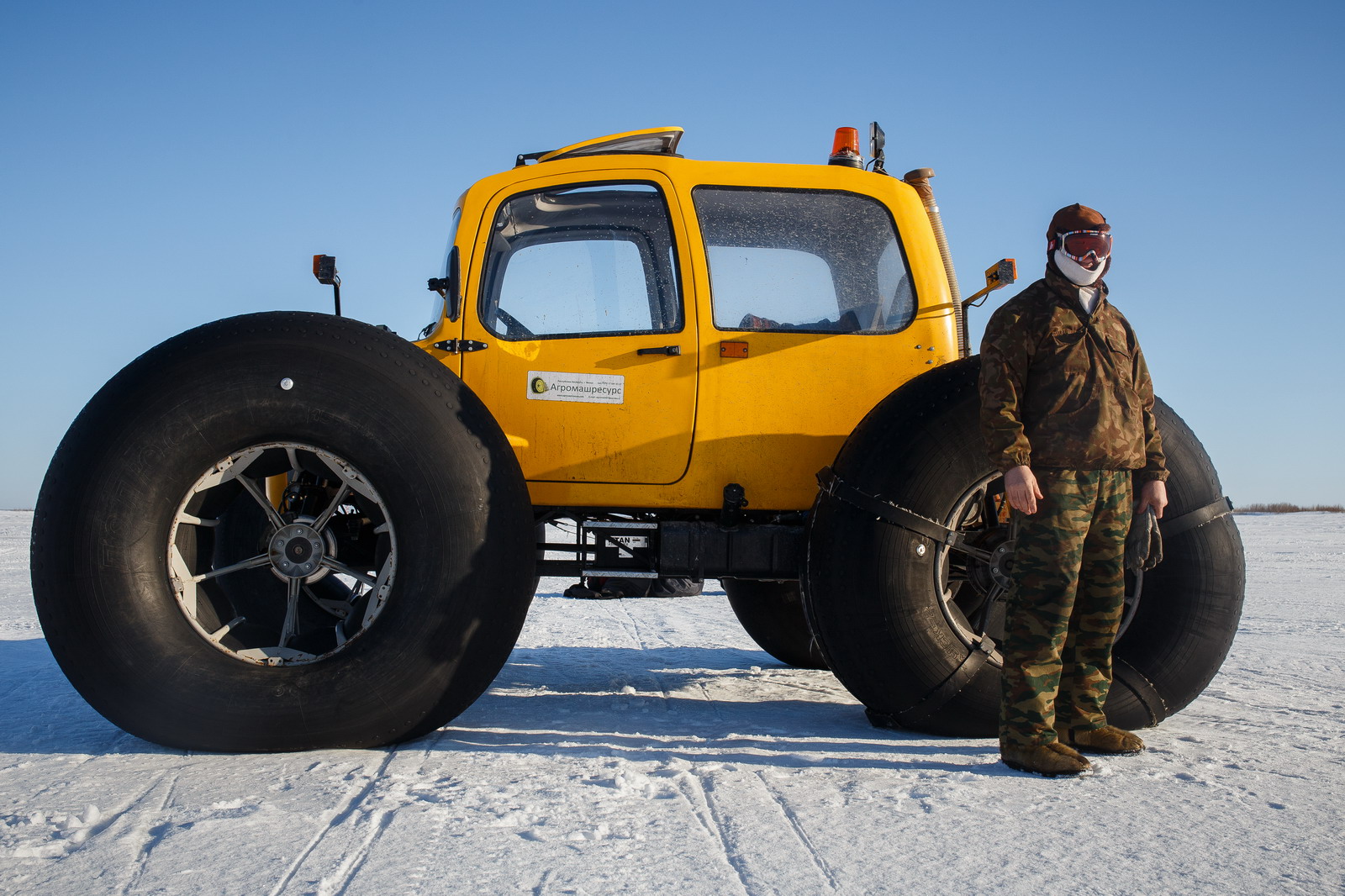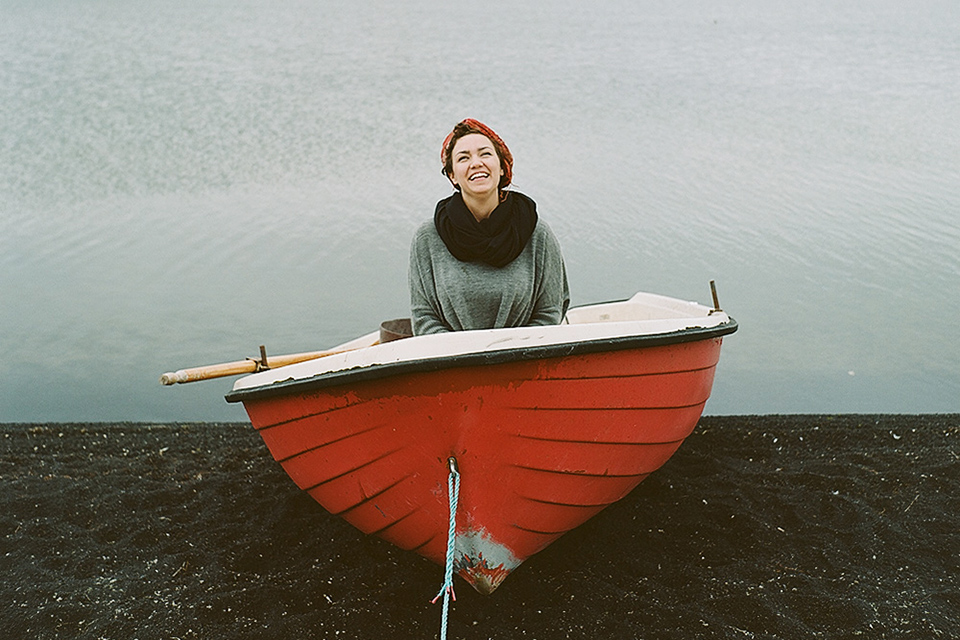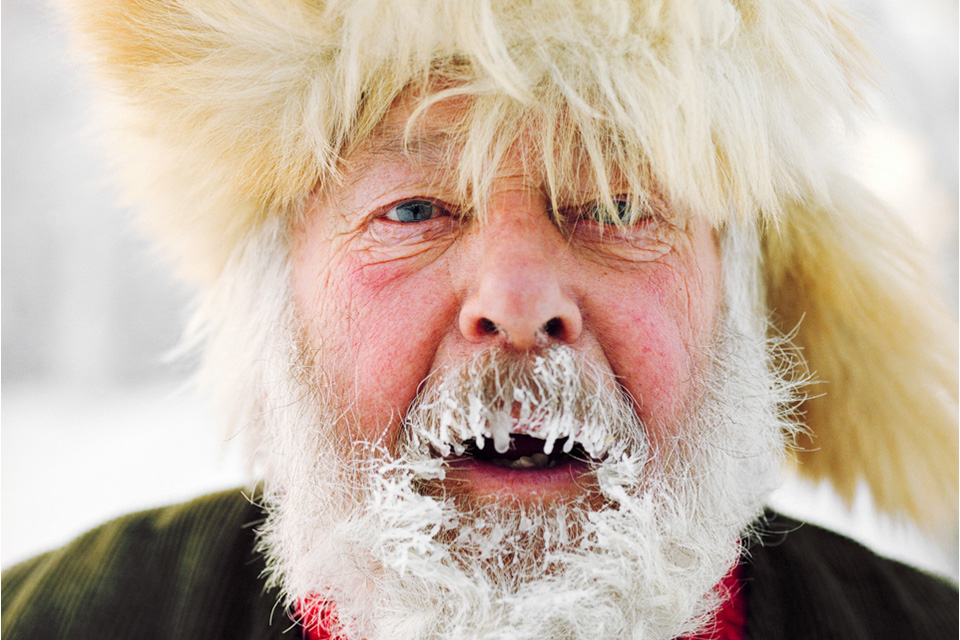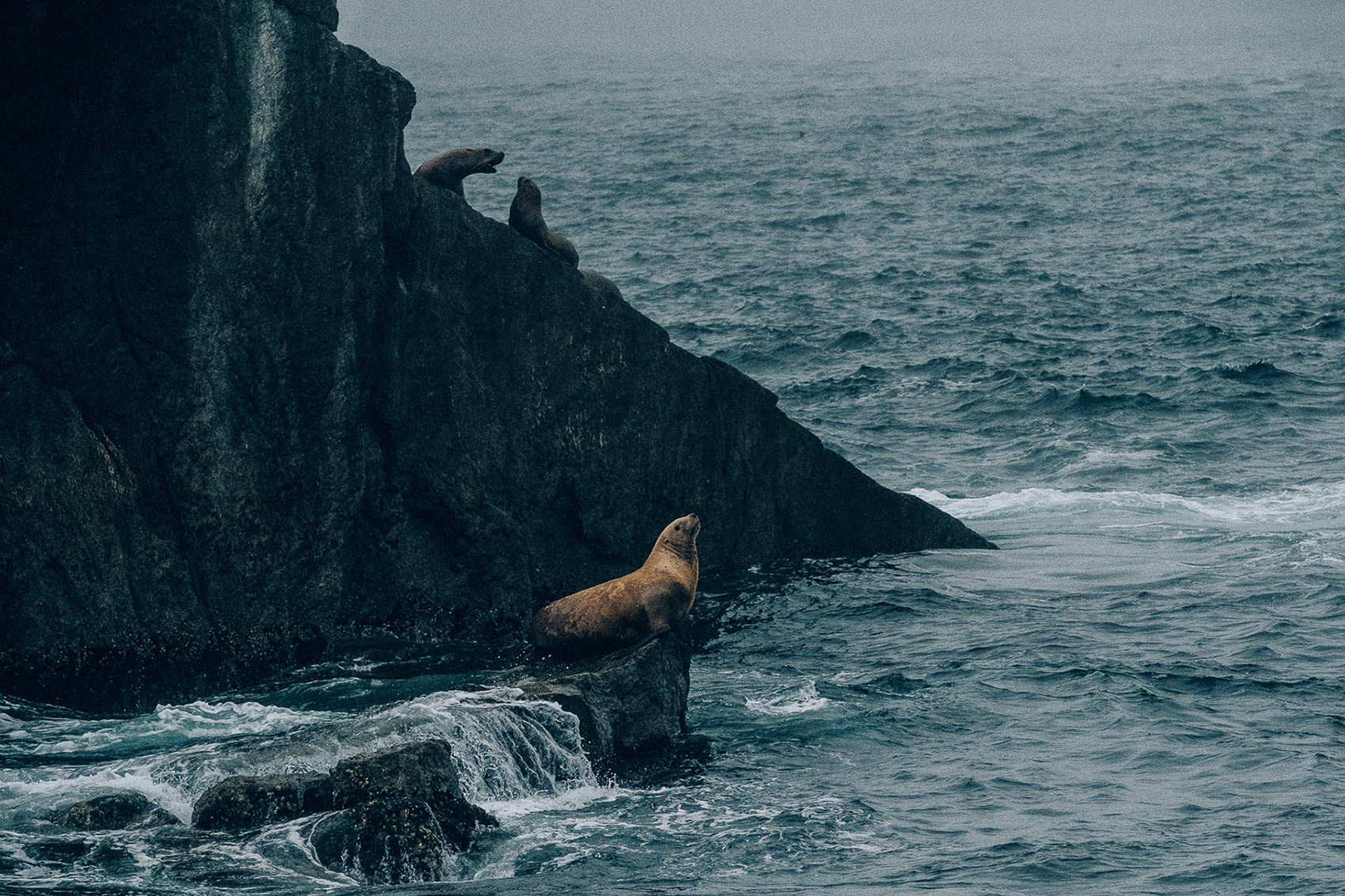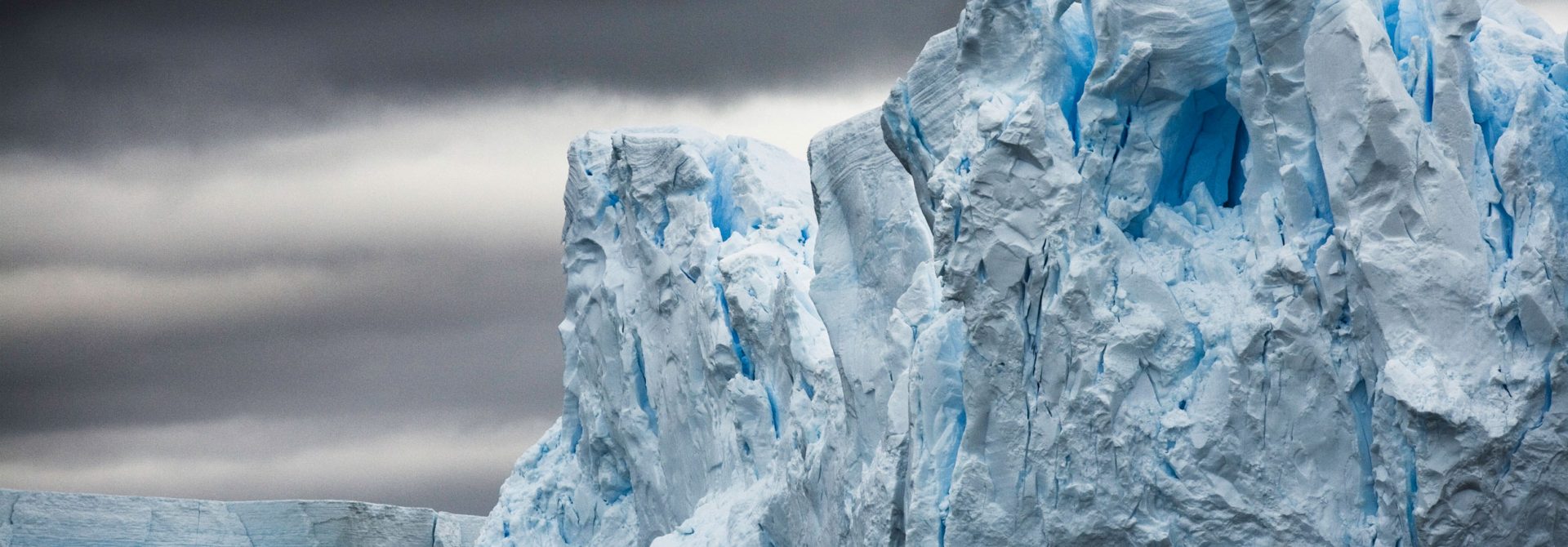
Sebastian Copeland: “I’ve Been Attacked by Polar Bears a Few Times”
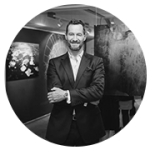
Photographer and polar explorer. In 2010, together with Eric McNair-Landry set a world record, covering 595 km during one 20-hour trip by kite skiing. In 2011-2012, he headed the first transcontinental crossing of the Antarctic (from East to West) on kites and skis. Author of photo albums Antarctica: The Global Warning and the Arctic. The Vanishing North, and documentaries Into the Cold: The Journey of the Soul and Across the Ice.
— Could you recall your initial impressions when you just started visiting the Arctic or Antarctica?
— There is no question that going to Antarctica is like visiting another planet. Not simply because it’s a place where humans have never existed until very recently. The light there is magical and completely different than anywhere else in the world. Because it is generally quite cold, there is not a lot of evaporation, so there is no haze in the air. Because of the lack of pollution there the clarity that is unlike anywhere else, so the sense of scale, the size of things is completely different than we are used to. You may have, for instance, an iceberg that seems to be a kilometer away and be of a certain size and in reality it is much farther and much bigger. If the sky is overcast and there is no light the object may almost disappear.
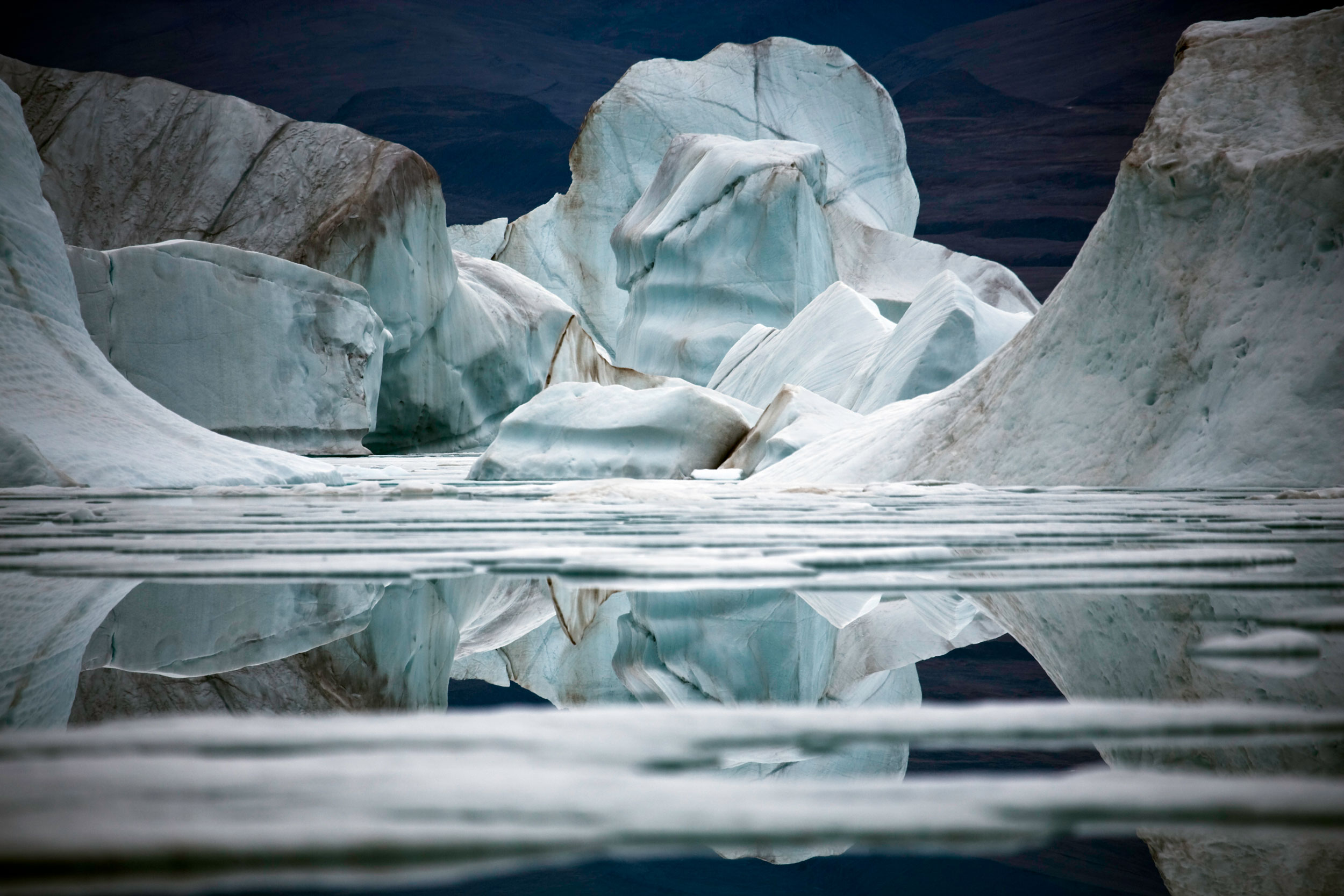
Ice reflection near Ellesmere Island, Canadian Arctic
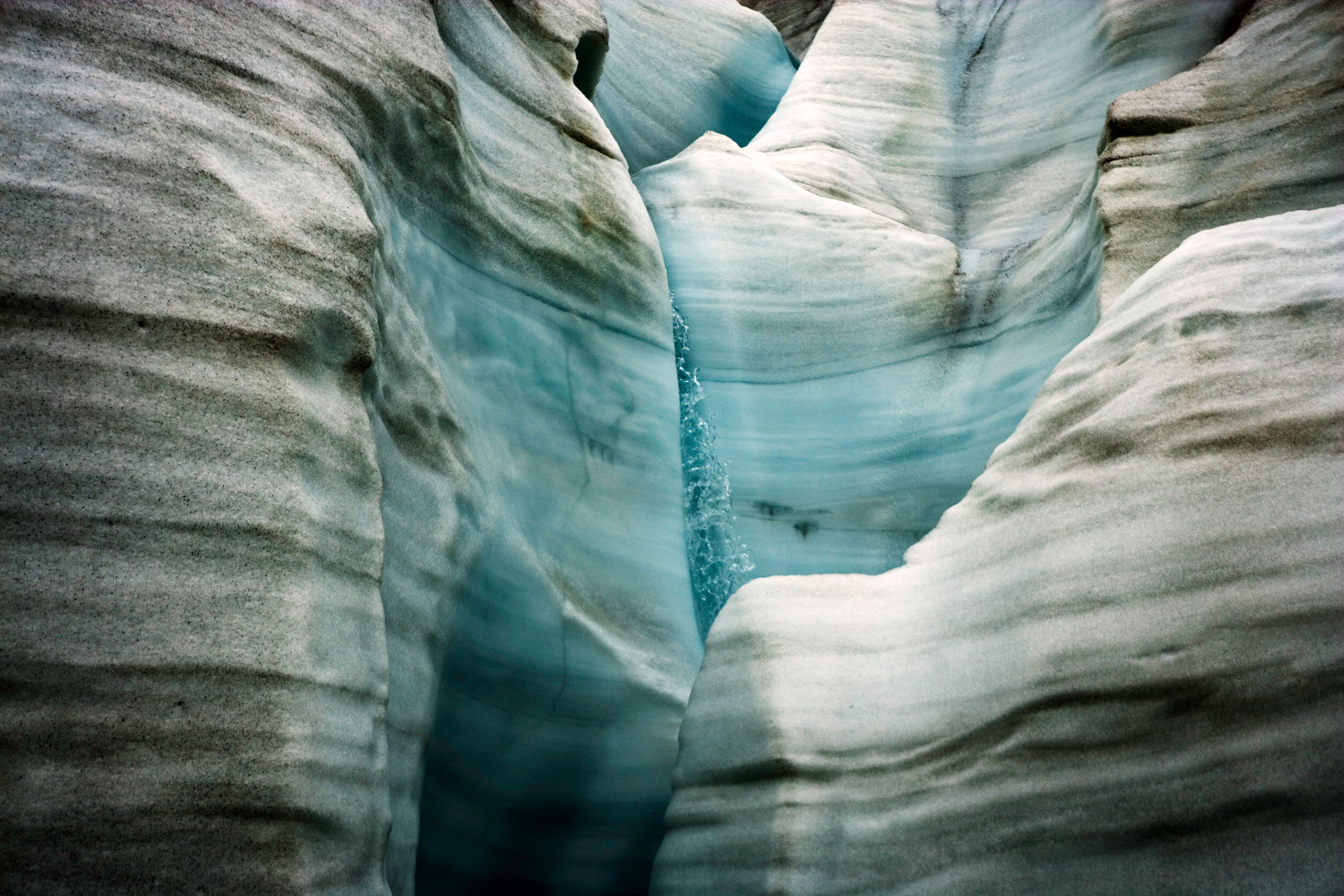
The melting Otto Fjord glacier, Canadian Arctic
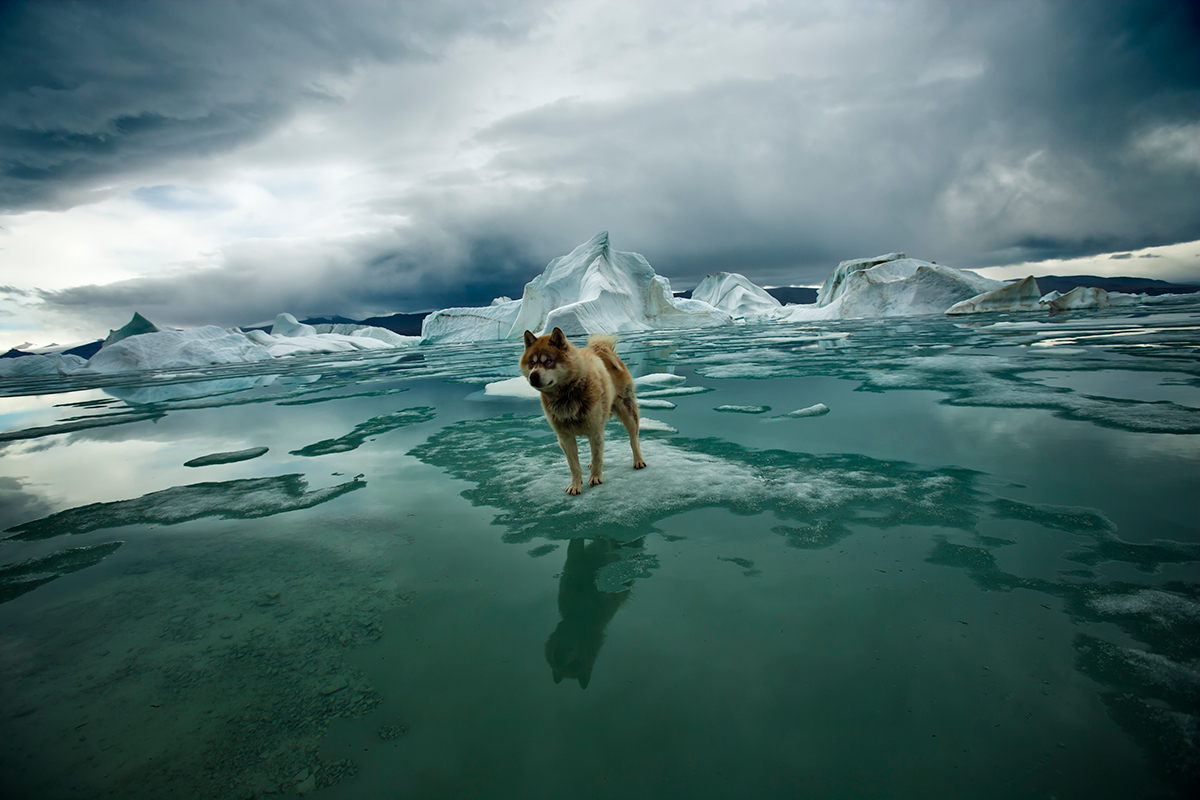
Dogs provide early warning for bears in the high Arctic
— So, was there enough light for you in Antarctica? Did you use any light equipment?
— No, no light equipment. The nice thing about shooting in the polar regions is that even in the middle of the day the light has always been coming at a low angle to the horizon. For photographers it’s Shambhala because photographers don’t have to get up early in the morning for catching perfect light there. So you can sleep late but you still get great light. In Greenland, I remember, at one in the morning there was extraordinary golden light.
— Is it possible to sleep when you get light twenty-four hours? Did you get tired from it?
— It’s easy with a face mask. More importantly that you can lose a sense of time on long expeditions. You work later, get up later, than your working day becomes much longer. Eventually you may find yourself getting out of bed at eleven at night and going to bed at two in the afternoon. The sun essentially has his path around the horizon, and you keep going on your way.
— In every expedition there may be dangerous situations such as a migrating ice or encounters with polar bears. Which of those situations was the most complicated?
— I think that no one will argue that a North Pole expedition was the most difficult one. The North Pole is unique and creates an illusion that you walk on solid ground but in reality it’s a thin crust of ice that separates up to five thousand meters of depth from your feet. Because the humidity level is very high there, the cold goes right to your bones even in the tent. In Antarctica, for instance, it may be -40°С outside but inside about -5°С if the sun shines on the tent. This is because the air is dry and the greenhouse effect. Whereas at the North Pole, if it’s -45°С outside it will be -32°С inside. On top of that the Arctic Ocean, there are polar bears who are formidable predators. And sometimes they can be aggressive.
More importantly, the ice on the Arctic is always moving because of wind, the current, and tides. That means that they will crack and reveal the ocean below it. At the same time, they will come together and create walls of ice. If you travel on the Arctic Ocean, you need to always go up and down these walls or cross these open bodies of water. And the worst thing is that because of the changing climate, the movement of the ice becomes faster than it used to be, the crust of ice becomes thinner. It means more walls, more open water, more danger. And it may be that the North Pole soon will no longer be possible to traverse.
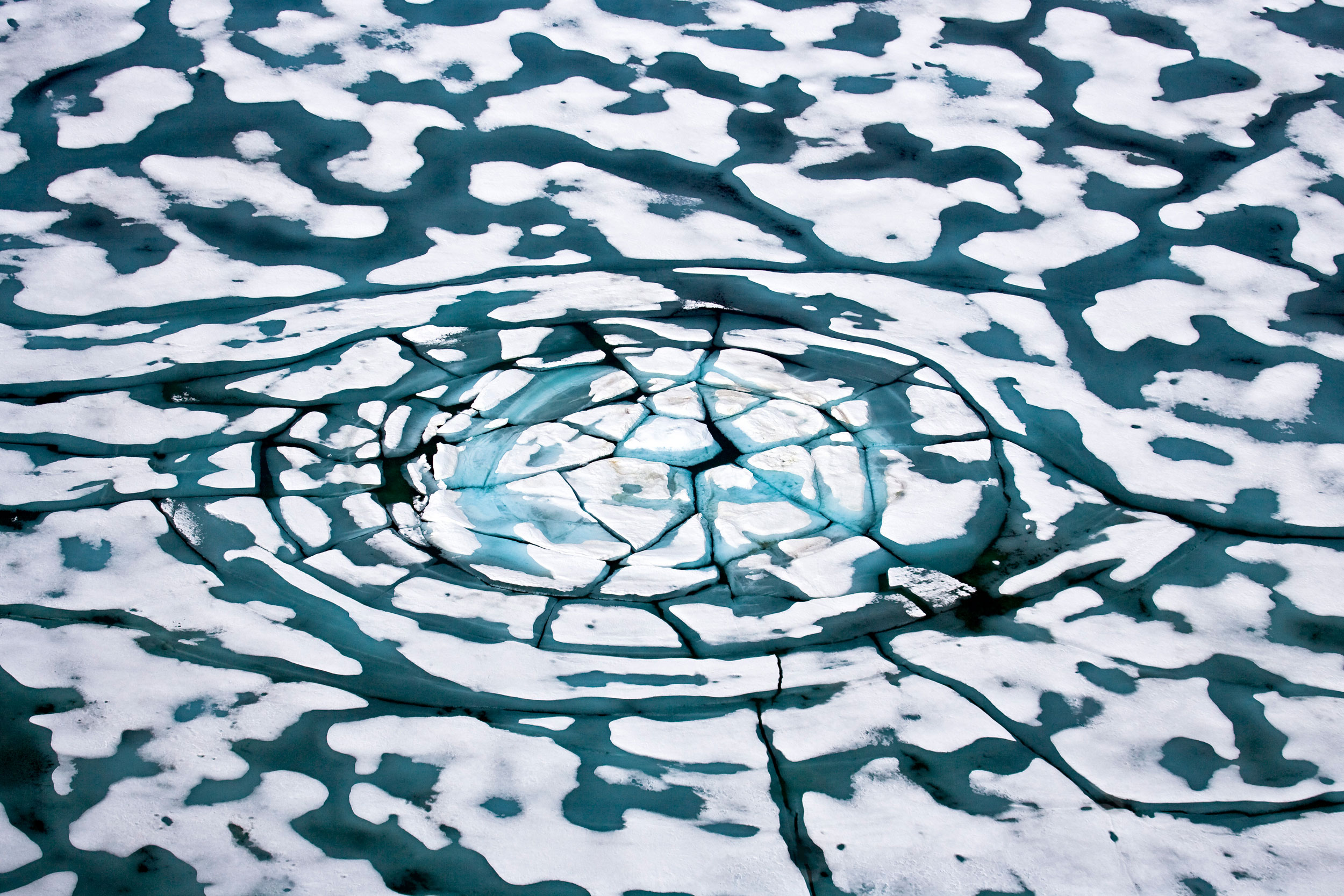
Open water patch, Canadian Arctic, 2010
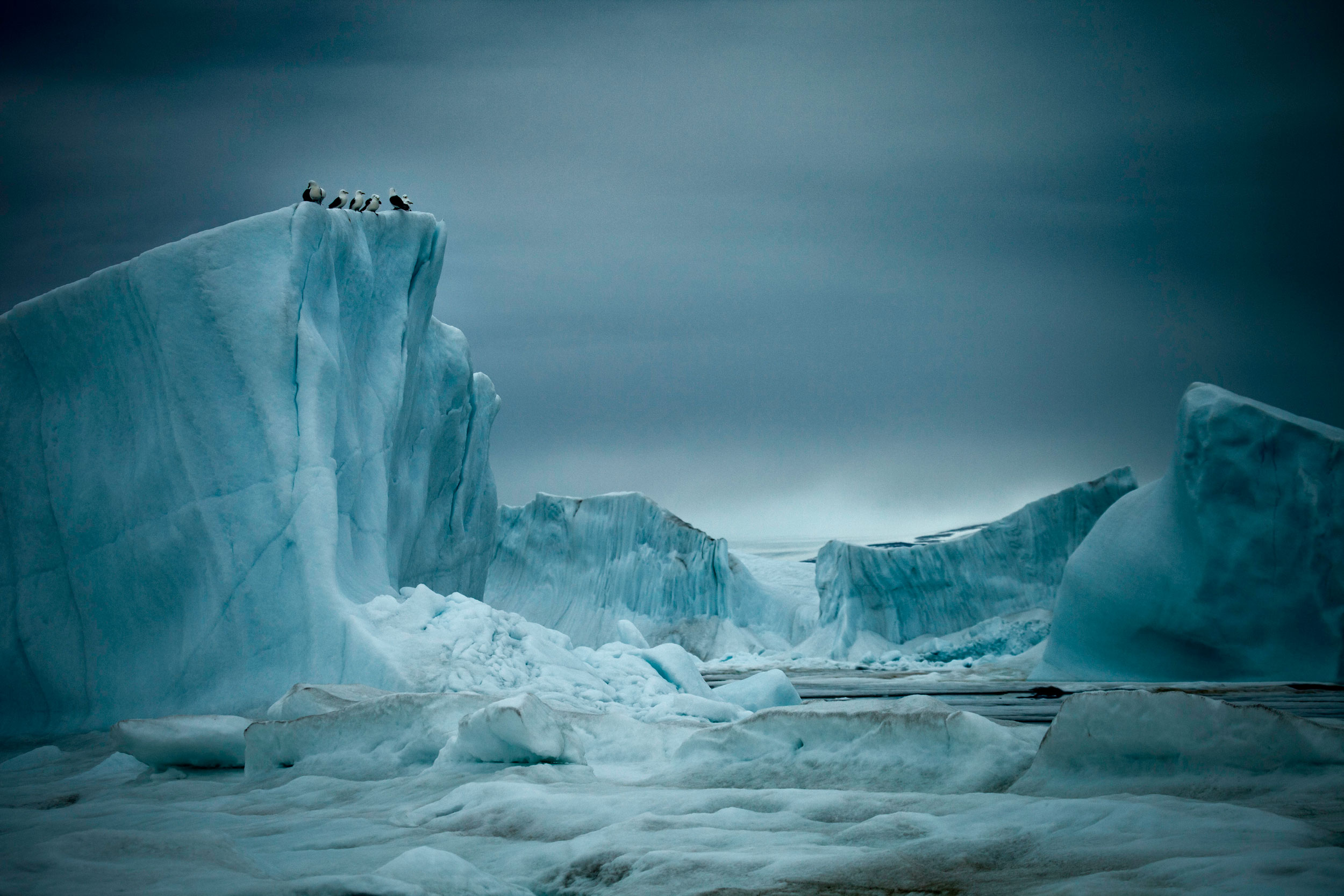
Black-legged kittiwakes on an iceberg. Greenland, 2010
— Is it possible to relax in the tent at -32°С?
— No. In the North Pole it’s not possible at all. And after a few days of adapting you get into essentially a meditative trance. It enables you to get by on very little. And in that context, any improvement becomes an incredible little gift. For instance, if it’s -55°С for a few days when all of a sudden it’s -25°С it feels like a holiday.
— I read in one of the interviews that you’d been attacked by a polar bear.
— I’ve been attacked a few times. I had one experience in particular where I was attacked several times by the same bear. I was alone on sea ice. We created a very interesting relationship and it came right at me. I am still here and so is the bear. After the bear’s trying to get to me, I had my turn. I’m trying to get after him. I used my arms and that enabled me to get really interesting photographs. I didn’t want to kill him. In fact, interesting photography always deals with the fine line between being in control or being completely out of control.
— Did you have to deviate from your route to take a really good picture?
– Deviate from the route – no, but slow down for travel in one place – yes. If you see something that you want to photograph you have to remove gloves, face mask, skis, and sledge, open that bag, take the camera out, put the battery in, takе the lens cover off, frame a shot, try not to get frostbite. The whole process psychologically restrains you from producing creativity, because so many external elements get in the way of spontaneity. Just to get one small image can take ten minutes.
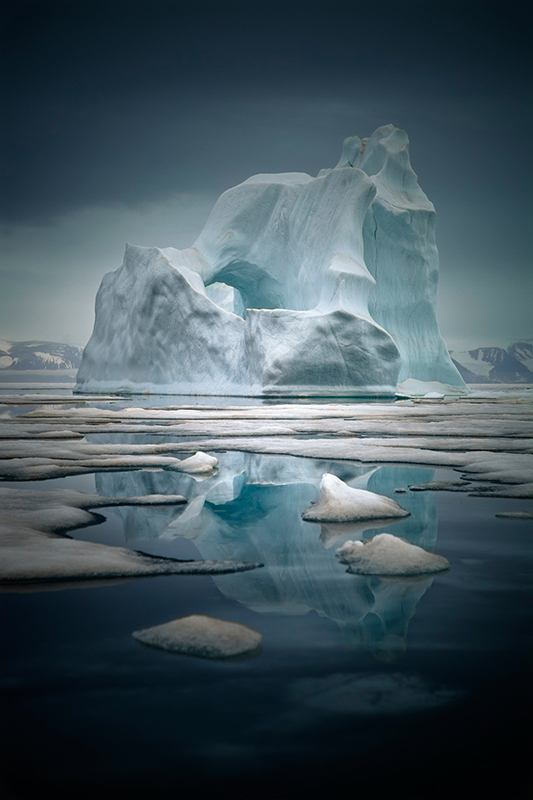
Iceberg XIX, Greenland, 2010
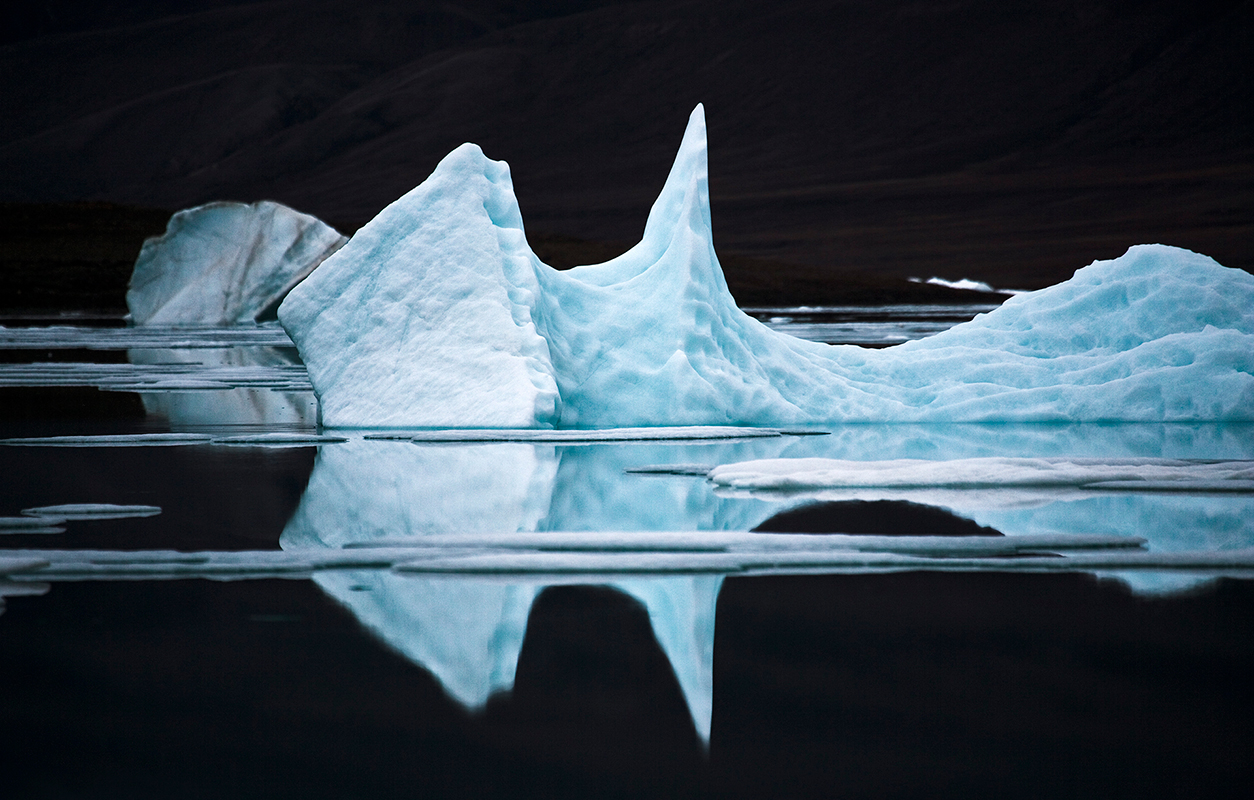
Iceberg XI
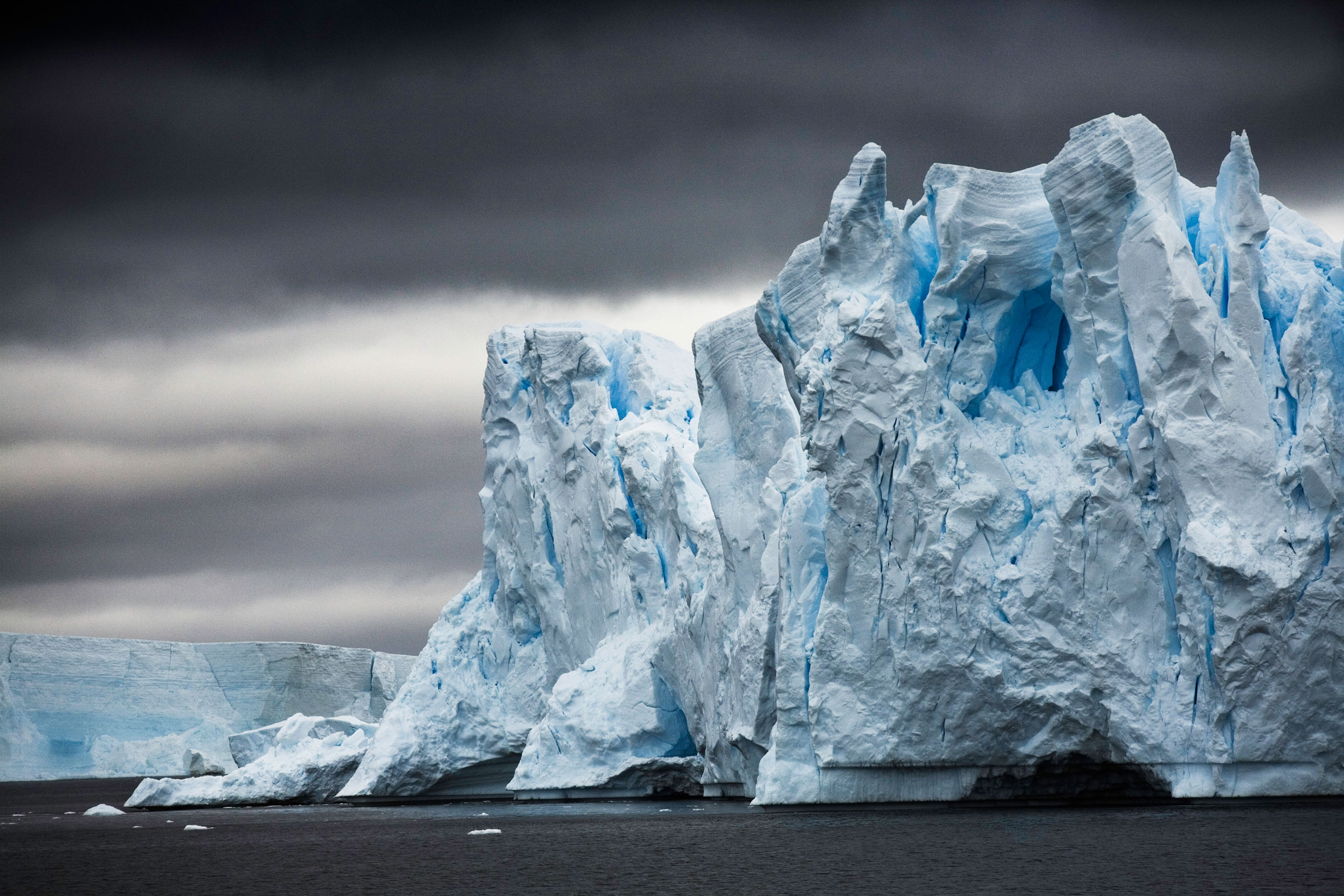
Glacier at Neumayer Strait, Antarctica Peninsula
— I read in one of your interviews that you have less clothes on during expeditions than in January in Britain. Is it true?
— It’s true. You have to dress like this in order not to sweat. If you stop your body temperature immediately from going down, you feel cold. You have to think about all those things before taking your photographs.
— Did your colleagues feel indignant at stopping in the freezing cold because of photos?
— I generally travel alone or with the one partner. Travelling with one partner is safer and mostly it’s more interesting. On top of that, you have somebody to photograph. On the one hand, he’s just standing in the cold with me and hoping that this will be over soon, and on the other hand, he likes to get picture of himself.
— But in 2005 you took Salma Hayek on your trip.
— I am on the board of directors of the American arm of Green Cross International and I’ve been working for many years on the climate change issue. In 2005, myself and my associate decided to pursue an initiative about the Inuits, and therefore, organize a press conference in the Arctic. But when we contacted the media, nobody was interested. Because I had photographed a lot of celebrities in Hollywood, I reached out to Salma Hayek and Jake Gyllenhaal. And they agreed to come on the trip with us. As soon as we got Hollywood actors, the whole list of press came up. It was a further proof that advocacy like everything else is a marketing job. That’s the way that the world works.
— What was Salma Hayek’s reaction when she found herself in those conditions?
— If you bring Salma Hayek, politicians and senators, you’re not going to do it the way I would do it. They didn’t sleep in tents and shit in the ice. Yes, it’s the experience of extreme cold, because it’s early April where the temperature is -32°С. But they helped us and we did manage to do a good press conference that was reported in The Washington Post and variety of other big outlets.
— There are a lot of interesting stories which stayed behind the scene. Could you tell us some of them?
— I crossed Greenland from south to north, the distance about 2,300 kilometres, and I didn’t have shower for forty two days before arriving at a small community in North Greenland. The helicopter picked us up and dropped us at the small village Qaanaaq. As soon as I got out of the helicopter, I noticed the frozen bay with icebergs in it. The light was perfect. I was exhausted, pretty dirty but decided to take my camera and go on to the bay. I walked and photographed about nine hours and took some of the best iceberg photos I ever have. For five days after that night, until the helicopter picked us up, it was bright sunshine and unphotographable. On top of that, the ice started to break and make the walking there more dangerous. If you have the opportunity, seize the day. When you see something, don’t think. It will come again. Mostly, it will not.
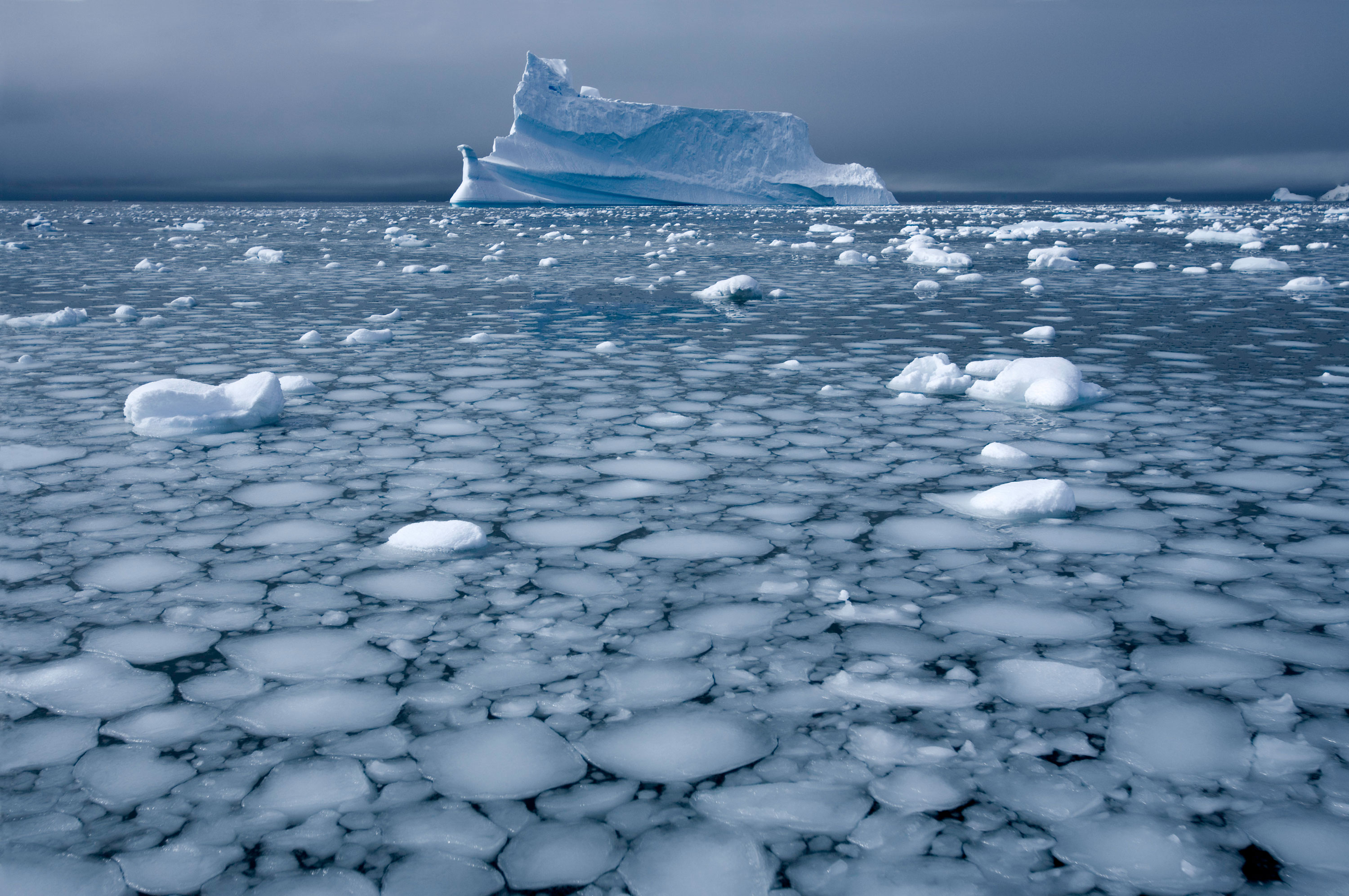
Forming sea ice, near Pampa Bay, Antarctica
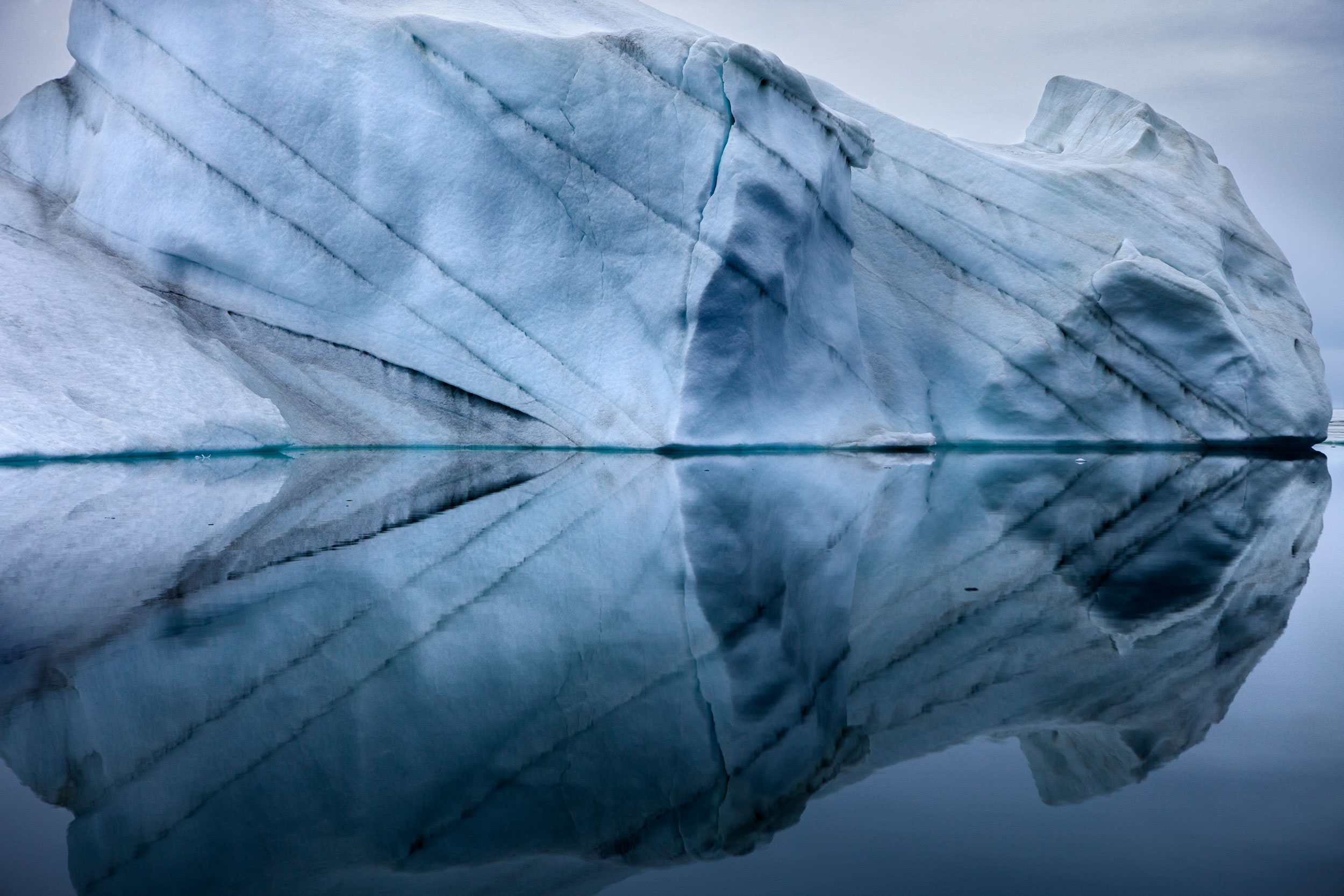
Reflection of an iceberg, Greenland, 2010
— Why are icebergs always bluish in your pictures? Is that because of the processing?
— No, of course not. Icebergs are the result of the glacier experiencing a tremendous amount of pressure. Glaciers are made of water and air, but an enormous amount of pressure squeezes the air out of the ice, and as a result all icebergs are blue. If it’s cloudy, the blue comes out of the ice. If there is sunlight, which has a lot of red in it, it suppresses the blue, and the icebergs look white. I look specifically for moments that create conditions for color.
— Do you work with black and white?
— I work with black and white. Monochrome photos — it’s a poetic interpretation that takes away from reality. I like this interpretation as well as documentation. But in truth I fundamentally believe that black and white is easier than color: less things to think about. But I try to be more disciplined and work with colors because it’s harder.
